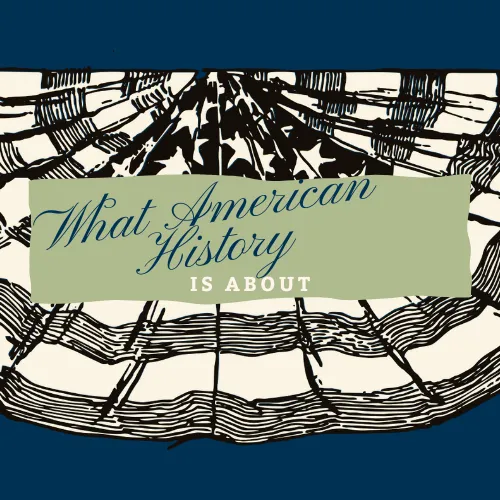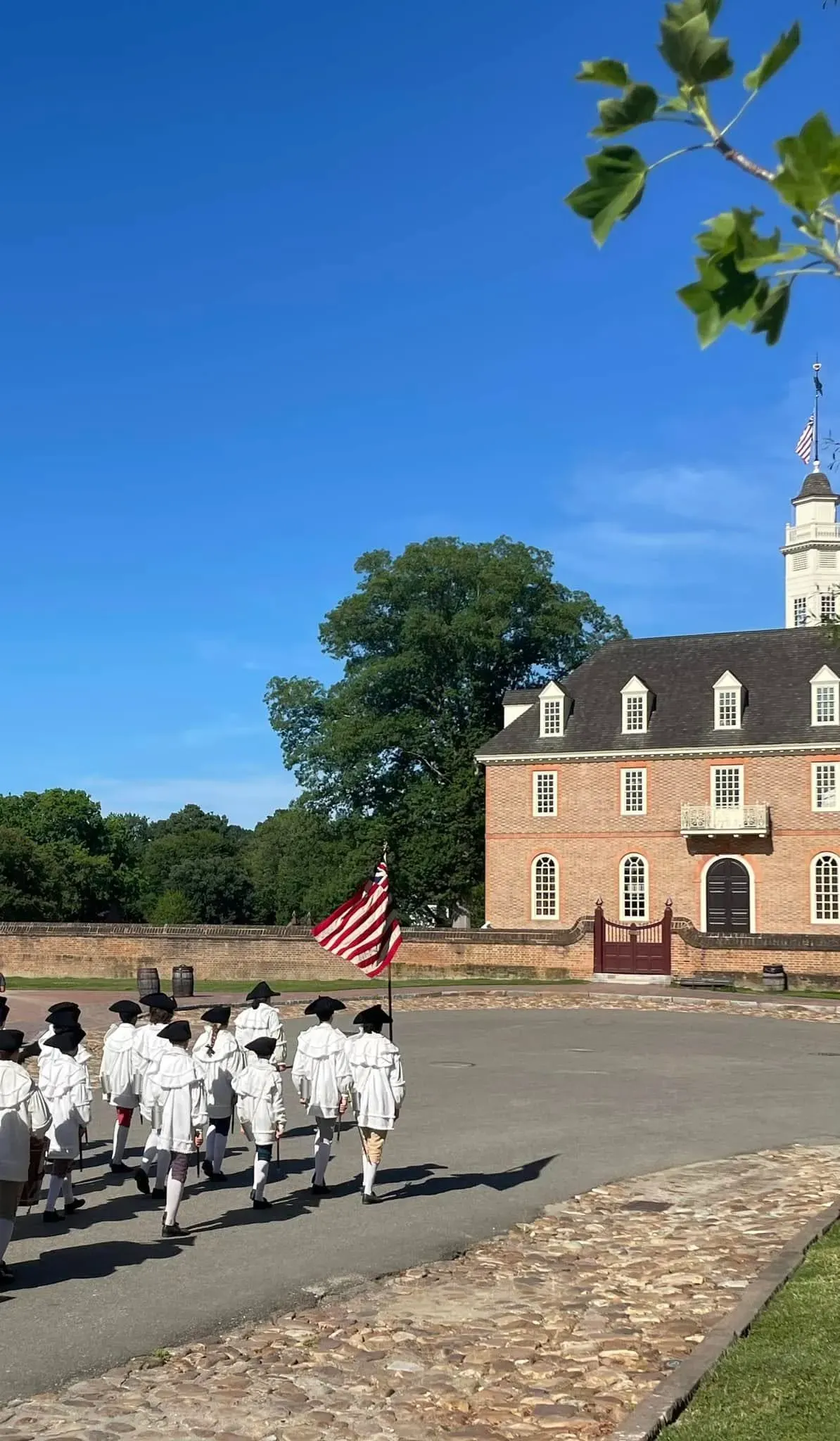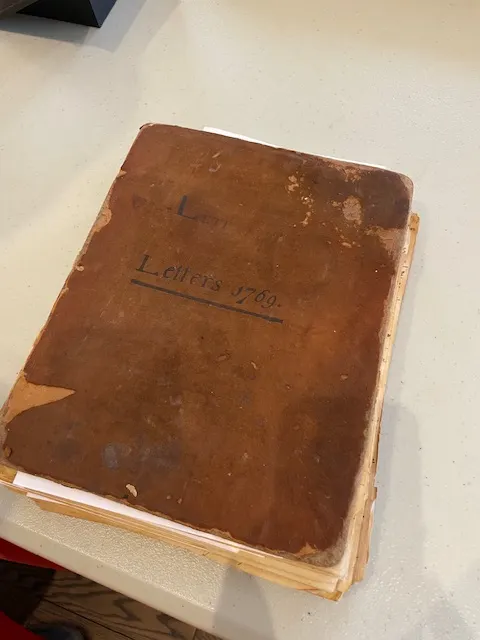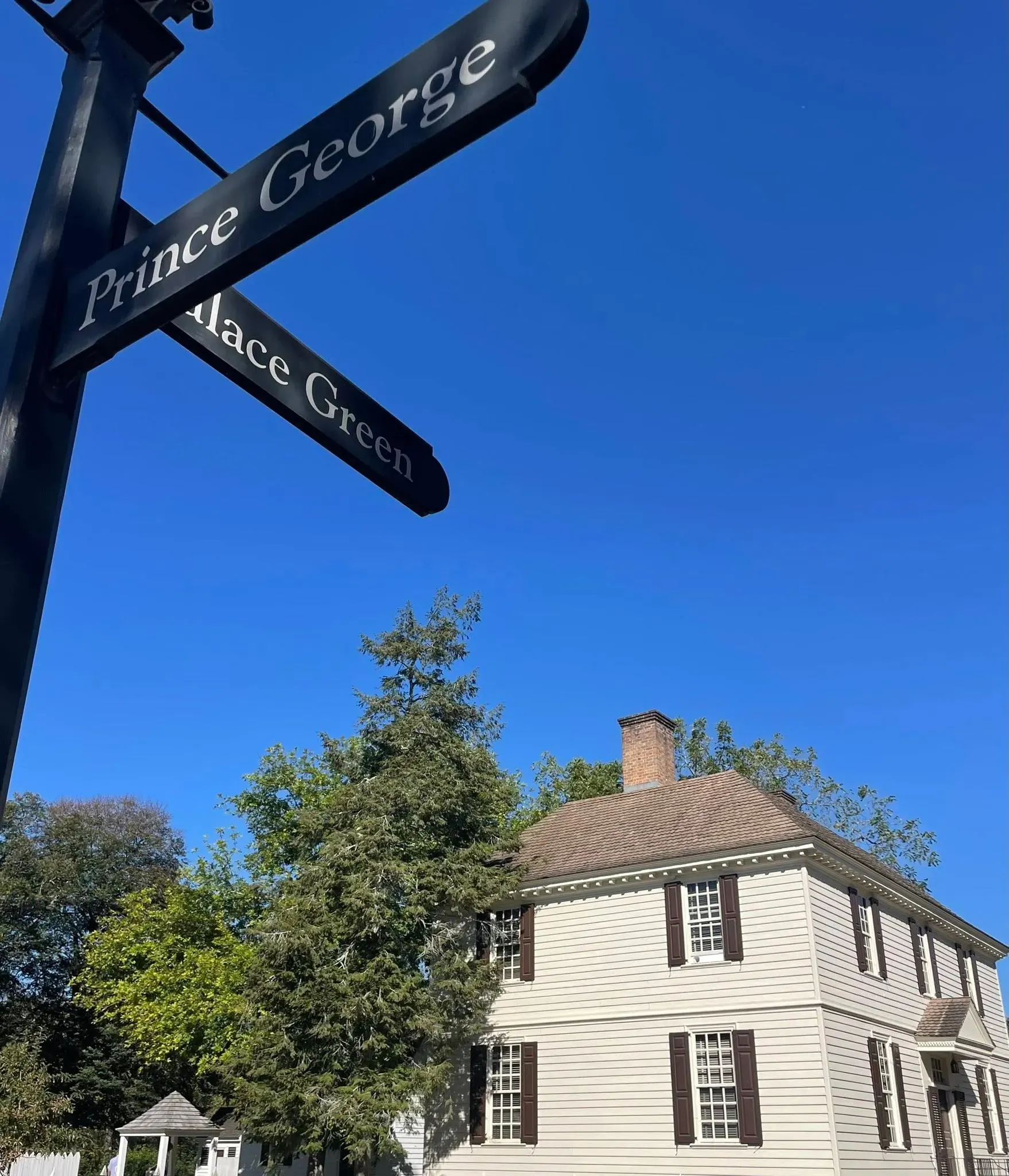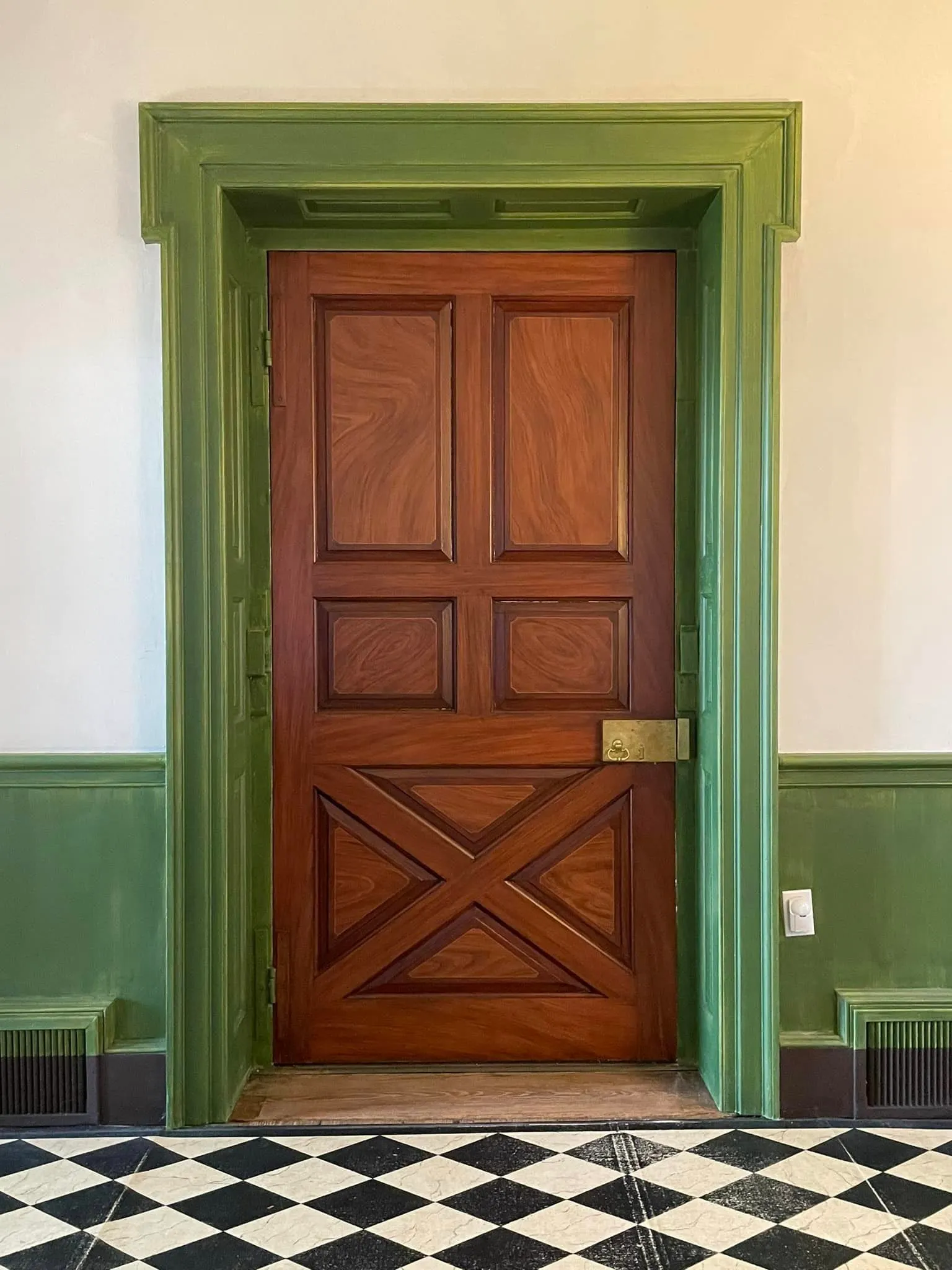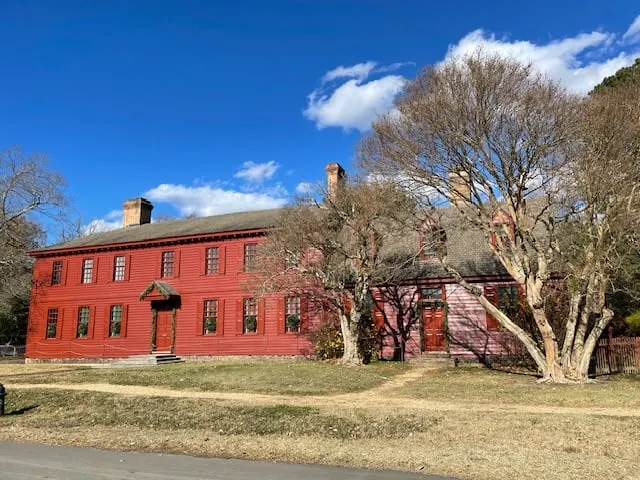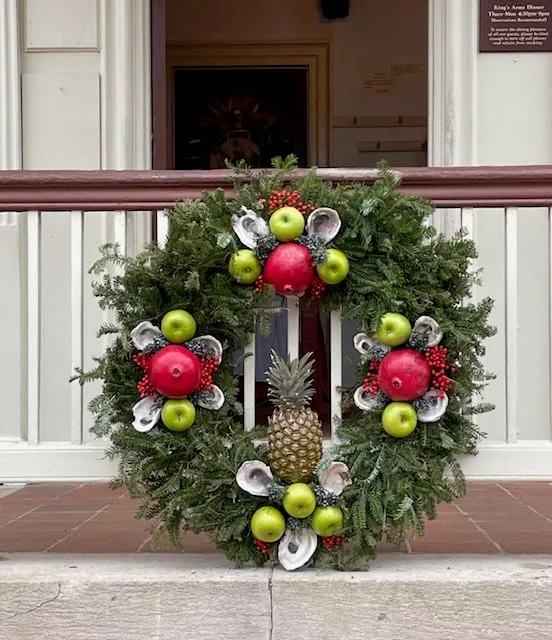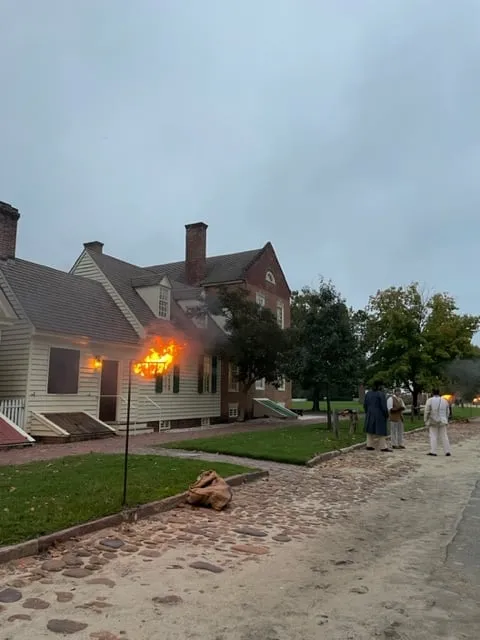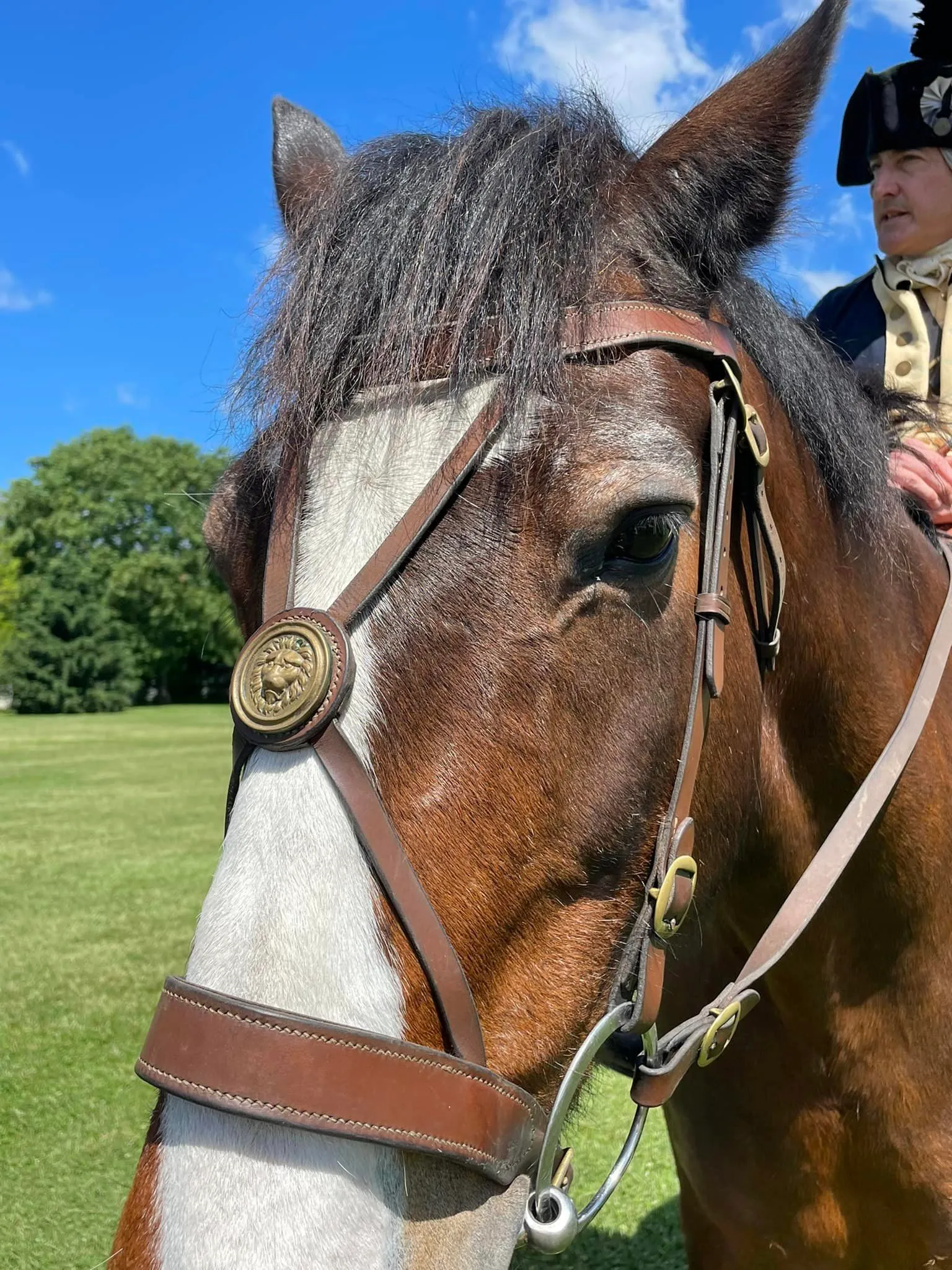Capturing the Right Spirit of Early American History: More Names to Know
Words from Jefferson are helping me write about Caty Greene and Rochambeau!
If you've been around this blog, you know why it exists- you know that it's basically my online journal, hardly academic and in no special order- stories and history I love as I learn it (or am inspired to write it)!
You also know I'll speak about Colonial Williamsburg's actor/historian/interpreters in character when it makes sense to the content.
RELATED: Read my post going into more detail!
When I was watching Jefferson on the stage yesterday he stated (and I'm paraphrasing) that when he drafted the Declaration of Independence, he aimed to capture the current spirit of the people.
It inspired me because there were a few people I wanted to write about and this is a perfect approach to the post: their spirit- specifically during that moment in time I love to learn about: the Revolutionary era.
Necessary disclaimer: As a blogger, I use affiliate links sometimes! I may receive commission from purchases I share; it does not change your price but sometimes you might get a discount.
Below are a few words about these people. Want to learn more? Dig deeper... and let me know! You may see their names in future posts, especially if you specifically ask for it!
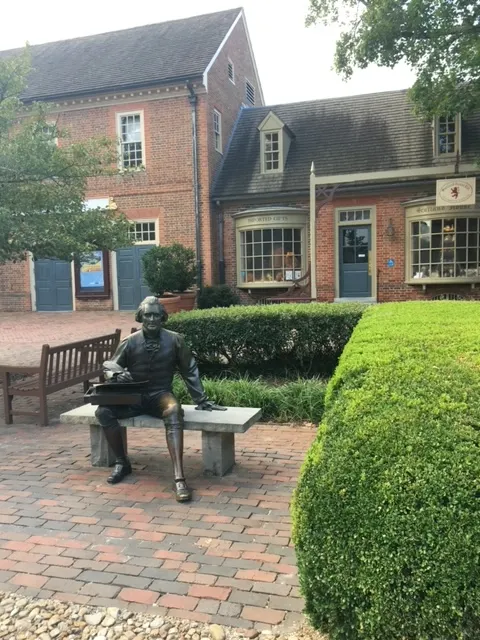
Jefferson's statue on Merchant's Square in CW.
I'd never heard of Caty Greene until Col. Washington talked about cotton at Ewing Field.
I'd definitely heard of Nathanial Greene who served as a general during the Revolution, and remember that Eli Whitney invented the cotton gin, changing our agricultural landscape, having both political and economic impact.
But who is Catherine "Caty" Greene?
If you guessed she was married to Nathaniel, you're right. If you knew that she supported and partnered up with Eli Whitney, that's way more than I knew before age 52!
After the Revolution, Nathaniel and his wife obtained land in Georgia, near Savannah. When Nathanial passed away, the property was continued to be run by Caty, who along with her next husband Phineas Miller, helped not only inspire the creation of the cotton gin, but also design and perfect it.
The need to find a way to earn cash from their land, in this case through cotton, was a driving force for innovation and her role, as I have been researching, is clear, putting her ahead of her time.
Some facts about Catherine Littlefield Greene:
- She was born in Rhode Island where she met her future husband Nathaniel, a cousin of her mother's sister's husband (did you follow?), while living with them. This uncle, William, served as Rhode Island's governor for a time.
- Her mother's sister, also referred to as Caty, is who she was named after. After Caty (the younger and topic of this post) married Nathanael, both women were Catharine "Caty" Greene.
- Caty (the aunt) was a known object of affection for Ben Franklin and many letters between the two are recorded in history. Click here to read more.
- Like Martha Washington, Caty Greene was often joined her husband at various encampments, including Valley Forge.
Caty Greene is a true example of the "current" spirit of the American people during our Revolution and what followed, in the early years of our United States.
Little could she have known the impact, negative as well as the positive, this would have on our nation. With the cotton gin came the surge of cotton production in the south, and a renewed reliance on the institution of slavery.
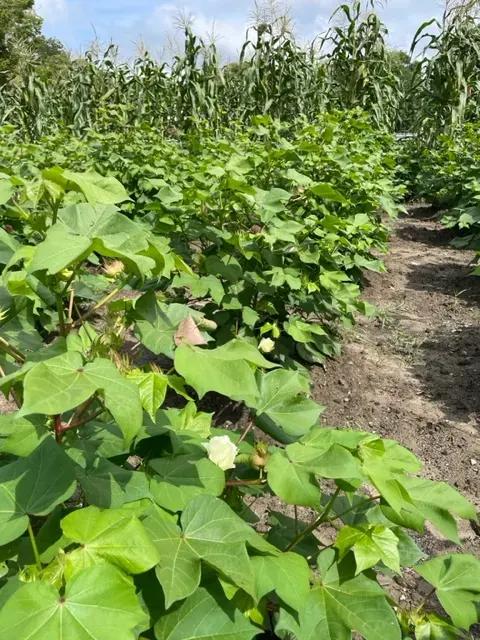
Cotton growing at Ewing Field
Thank goodness CW's Mark Schneider is bringing Rochambeau to life.
Have you heard of Rochambeau? His full name is Jean-Baptiste Donatien de Vimeur, comte de Rochambeau- and he is one of the reasons we are independent today!
You can get an introduction to the Marquis de Lafayette in this post. He came to America specifically to fight alongside Washington, defying his King and Queen, who told him "non."
But once the Alliance was signed and King Louis XVI came on board, he sent us Rochambeau to lead the French forces and support General Washington. Mark Schneider, who portrays the Marquis here at CW, has written a program to bring Rochambeau to life on the stage. (no pictures are allowed in the auditorium, where you need a ticket for entry, so my photo is of Mr. Schneider in character as Lafayette in public view)
My bullet points on Rochambeau:
- While he initially came here on the orders of his King, he was moved by the spirit of the American people and became passionate about the cause in his own right.
- The Peyton Randolph House was his home during his time in Williamsburg (before and after the Yorktown Victory). I have some notes on Randolph here.
- As the 2nd son, he initially was meant to be an ordained minister, but that changed when his brother passed away.
- He married late (for the time)! He was in his 20s when he met and fell in love with a Portuguese merchant's daughter.
- The Rochambeau family's coat of arms' motto is "To live and die as a gallant knight."
- Having a high military status under the King, he was imprisoned during the French Revolution, but freed instead of becoming a victim of the guillotine.
Early American spirit, captured into the heart of a Frenchman we owe our liberty to.
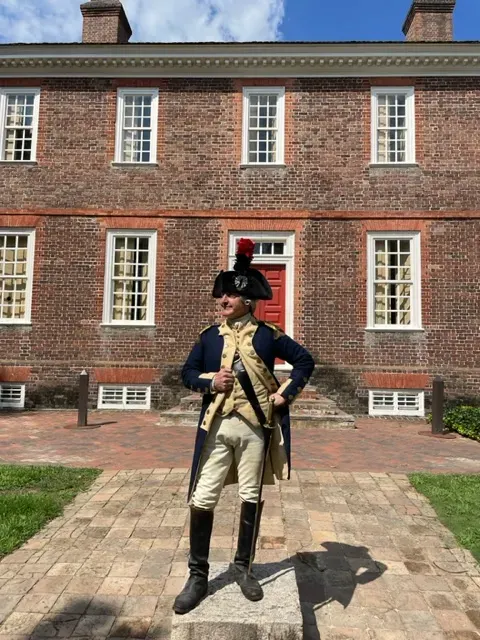
Mark Schneider posing as the Marquis in front of the original Wythe House, where he stayed with Gen. Washington. Note about photo: Mr. Schneider often cites a quote about the Marquis being "a statue in search of a pedestal" - you can see why he posed on this spot!
I'll close with an excerpt from Washington's July 19th letter, in 1780, to Nathanael Greene showing the importance of Rochambeau and the French support at sea.
From George Washington to Major General Nathanael Greene, 19 July 1780
To Major General Nathanael Greene
Head Quarters Bergen County 19 July 1780
Dear Sir
By dispatches recd the last evening from the Count de Rochambeau I am informed that the French Fleet and Army consisting of eight ships of the Line two Frigates and two Bombs and upwards of five thousand Men have arrived at Newport1—This makes them rather inferior to the combined naval force of Arbuthnot, and Greaves; but as a second division of ships and land Forces (a circumstance you will keep to yourself) may be expected in a few Weeks, it is probable we shall gain a superiority at sea, by the time we can be ready to operate, as Count de Rochambeau is of opinion that his land force will not be sufficiently recruited under four Weeks from the 12th inst: Should a superiority at Sea be established, it would lessen our land transportation in so considerable a degree, that little or no doubt would remain of our being able to keep up the requisite supply of provision—
(the letter continues- read in full on Founder's Archives, my source, here)
Enjoying this blog? I have an online tip jar! Click here to tip me.
There is a huge practical disclaimer to the content on this blog, which is my way of sharing my excitement and basically journaling online.
1) I am not a historian nor an expert. I will let you know I’m relaying the information as I understand and interpret it. The employees of Colonial Williamsburg base their presentations, work, and responses on historical documents and mainly primary sources.
2) I will update for accuracy as history is constant learning. If you have a question about accuracy, please ask me! I will get the answer from the best source I can find.
3) Photo credit to me, Daphne Reznik, for all photos in this post, unless otherwise credited! All photos are personal photos taken in public access locations or with specific permission.
